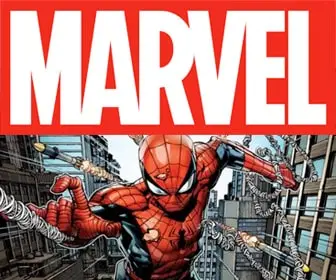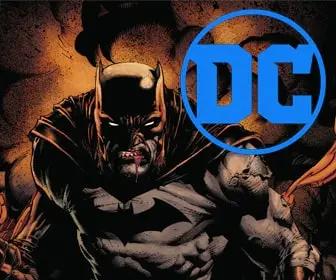
From Margins to Mainstream: The Enduring Legacy of Underground Comics
Introduction: The Rise of an Alternative in the 1960s Counterculture
The 1960s was a period of immense social and political upheaval in the United States. The Vietnam War raged on, the Civil Rights Movement demanded equality, and a generation of young people challenged the status quo. This countercultural movement embraced free love, psychedelic exploration, and a rejection of mainstream values. It was within this vibrant atmosphere that a new form of comic book expression emerged: underground comix.
Traditionally, comic books adhered to the guidelines set forth by the Comics Code Authority (CCA) in 1954. The CCA, established by the comics industry itself, aimed to clean up comics deemed too violent or suggestive for young readers. This meant restrictions on content depicting crime, drugs, sexuality, and even some forms of humor. However, for many aspiring comic creators, the CCA’s restrictions stifled creativity and felt out of touch with the realities of the world around them.
Thus, underground comix arose as a form of artistic rebellion. Produced independently and self-published, these small press comics reveled in the freedom to explore themes and content deemed taboo by the mainstream. Underground comix became a platform for social and political commentary, challenging societal norms and pushing the boundaries of artistic expression.
Breaking the Mold: Themes and Content in Underground Comix
Underground comix were a far cry from the sanitized superheroes and wholesome humor of mainstream comics. Unbound by the CCA’s restrictions, these alternative publications tackled a wide range of mature themes, often with a heavy dose of satire and dark humor. Here are some of the key themes that defined underground comix:
- Social and Political Commentary: Underground comix served as a powerful tool for social and political critique. Artists lampooned the Vietnam War, government hypocrisy, and racial injustice. Titles like R. Crumb’s “Fritz the Cat” used anthropomorphic animals to deliver biting social commentary, while publications like “Black Power” addressed issues of racial discrimination faced by African Americans.
- Drugs and Counterculture: The psychedelic experimentation and drug use prevalent in the counterculture movement found a prominent voice in underground comix. Artists like Gilbert Shelton’s “The Fabulous Furry Freak Brothers” explored the experiences of drug use in a humorous, yet cautionary, light. These comics were a reflection of the counterculture’s exploration of altered states of consciousness and a rejection of traditional societal norms.
- Sexuality and Gender: Underground comix shattered the limitations placed on sexuality in mainstream comics. These publications depicted a frank and often explicit exploration of human sexuality, challenging traditional gender roles and societal taboos. Aline Kominsky’s “Wimmen’s Comix” provided a platform for female artists to showcase their work and challenge the male-dominated comics industry.
- Alternative Lifestyles: Underground comix embraced the exploration of alternative lifestyles often deemed unconventional by mainstream society. Themes of self-discovery, anti-establishment views, and a rejection of materialism were prevalent. Crumb’s “Zap Comix” featured characters like Mr. Natural, a parody of a health food guru, who embodied the counterculture’s embrace of alternative living philosophies.
By tackling these taboo subjects and employing unconventional artistic styles, underground comix challenged the established norms of comic book storytelling. They not only pushed the boundaries of content but also paved the way for a more diverse and expressive future for the comic book medium.
Pioneering the Movement: Key Figures and Zines that Defined Underground Comix
The underground comix movement wouldn’t have flourished without the dedication and creative spirit of a core group of artists and writers. These pioneers self-published their work, often through independent publishing houses or “zines” (short for magazines), creating a vibrant network of alternative comics distribution. Here are some of the key figures and publications that defined the era:
- Robert Crumb: Arguably the most recognizable name in underground comix, Crumb’s work like “Zap Comix” explored social satire, sexuality, and his own inner struggles with a raw, expressive style. His characters, like Fritz the Cat and Mr. Natural, became iconic symbols of the counterculture movement.
- Art Spiegelman: Spiegelman, known for his Pulitzer Prize-winning graphic novel Maus, honed his craft in the underground scene with publications like “Real Pulp.” His work often employed a collage-like style and dark humor to tackle serious themes like politics and social issues.
- Trina Robbins: A champion for female creators in a male-dominated industry, Trina Robbins co-founded “Wimmen’s Comix,” an all-female anthology that provided a platform for women’s voices and perspectives in comics.
- Gilbert Shelton: Shelton’s iconic creation, “The Fabulous Furry Freak Brothers,” with its cast of anthropomorphic stoners, lampooned mainstream culture and embraced the counterculture’s psychedelic sensibilities.
- Spain Rodriguez: Known for his bold, graphic style and biting social commentary, Rodriguez’s work in publications like “Chicano Comix” explored themes of racial identity and the Chicano experience in the United States.
These are just a few of the many talented artists who helped shape the underground comix movement. Alongside them, numerous independent zines emerged, fostering a sense of community and providing an outlet for a diverse range of voices. Some notable zines include “Weirdo,” known for its bizarre and surreal stories, and “Arcade,” which showcased a variety of artistic styles and experimental narratives.
These key figures and publications not only challenged the status quo within comics but also inspired a generation of artists to push creative boundaries and explore mature themes with greater freedom.
Impact and Legacy: A Catalyst for Change for Comics and Independent Media
The underground comix movement’s impact transcended the realm of comic books themselves. It served as a catalyst for change within the comics industry and for independent media as a whole. Here’s how underground comix left their lasting mark:
- Paving the Way for Mature Comics: Underground comix challenged the CCA’s stranglehold on content in mainstream comics. The success of these alternative publications, coupled with court rulings against the CCA’s censorship practices, led to a gradual loosening of restrictions. This paved the way for the rise of “mature reader” comics, allowing for a wider range of themes and content to be explored within the mainstream market.
- Birth of Independent Comics Scene: The self-publishing ethos of underground comix inspired a thriving independent comics scene. Artists and writers, no longer bound by the limitations of mainstream publishers, could create comics on their own terms. This led to a flourishing of diverse voices and artistic styles, enriching the overall landscape of comic book storytelling.
- Influence on Alternative Media: The DIY spirit and rebellious nature of underground comix resonated with creators across various media. Independent filmmakers, musicians, and zine creators drew inspiration from the movement’s emphasis on self-expression and social commentary. This cross-pollination of ideas helped to invigorate alternative media and fostered a more critical and independent voice in popular culture.
- Preserving Historical and Cultural Context: Underground comix serve as a valuable historical and cultural document of the 1960s counterculture movement. These comics provide a raw and unfiltered perspective on the social, political, and artistic concerns of the era. They offer researchers and scholars a unique window into the zeitgeist of the time.
The impact of underground comix continues to be felt today. Their legacy lives on in the thriving independent comics scene, the growing acceptance of mature themes in mainstream comics, and the enduring spirit of self-expression and artistic freedom within alternative media.
Collectors
Here are 5 underground comix that every fan should own:
- Zap Comix #1 (1968) by Robert Crumb: This landmark issue is not only the first issue of Zap Comix, but it’s also considered the one that truly ignited the underground comix movement. Crumb’s iconic characters like Fritz the Cat and Mr. Natural made their debut in this issue, along with his raw, satirical artwork that challenged societal norms.
- Wimmen’s Comix #1 (1970) edited by Trina Robbins: This groundbreaking all-female anthology provided a much-needed platform for women cartoonists in the male-dominated industry. Featuring work by Trina Robbins, Roberta Gregory, and Diane Noomin, Wimmen’s Comix tackled themes of feminism, sexuality, and social justice from a woman’s perspective.
- Black Power (1970) edited by Floyd McKissick and Ronald Fair: This crucial anthology showcased the work of Black cartoonists like Stokely Carmichael and LeRoi Jones. Black Power addressed issues of racial discrimination and Black identity, offering a powerful counterpoint to the predominantly white underground comix scene.
- The Fabulous Furry Freak Brothers #1 (1971) by Gilbert Shelton: This outrageously funny comic strip featuring a family of stoner anthropomorphic rabbits quickly became a cult classic. Shelton’s work lampooned mainstream culture, politics, and the counterculture itself, all with a healthy dose of dark humor.
- Maus #1 (1980) by Art Spiegelman: While Maus wasn’t technically part of the underground comix movement of the 60s and 70s, it emerged from that scene and shares many of its themes. Spiegelman’s groundbreaking graphic novel, which depicts the Holocaust using anthropomorphic animals, is a powerful testament to the potential of comics to tell complex and mature stories.
These are just a few of the many great underground comix out there. With a little digging, you’re sure to find many more that will challenge your perceptions and spark your imagination.
Conclusion: The Enduring Spirit of Underground Comix
While the underground comix movement of the 1960s and 70s may have waned commercially, its influence and spirit remain firmly embedded in the world of comics and beyond. The movement’s significance lies not just in its provocative content but in its unwavering commitment to artistic freedom and social commentary.
The decline of the movement can be attributed to several factors, including legal battles with obscenity laws, the commercialization of some underground artists, and a shift in countercultural movements. However, the impact of underground comix continues to resonate.
Today, independent comics publishers flourish, offering a platform for diverse voices and innovative storytelling. The rise of graphic novels with mature themes is a testament to the success of underground comix in challenging censorship and paving the way for a more expansive comics landscape.
The legacy of underground comix extends far beyond the world of comics. Their DIY approach and focus on social critique influenced independent media across various platforms. The spirit of rebellion and self-expression continues to inspire creators to push boundaries and challenge the status quo.
In conclusion, underground comix were more than just controversial comic books. They were a cultural phenomenon that challenged norms, ignited creative expression, and left an indelible mark on the history of comics and independent media. Their enduring spirit serves as a reminder of the power of art to spark conversation, challenge authority, and offer a unique perspective on the world around us.














